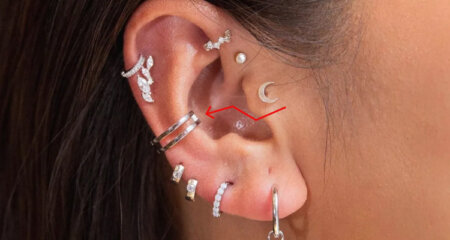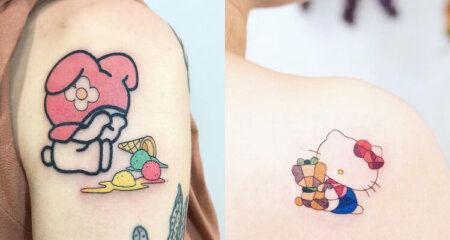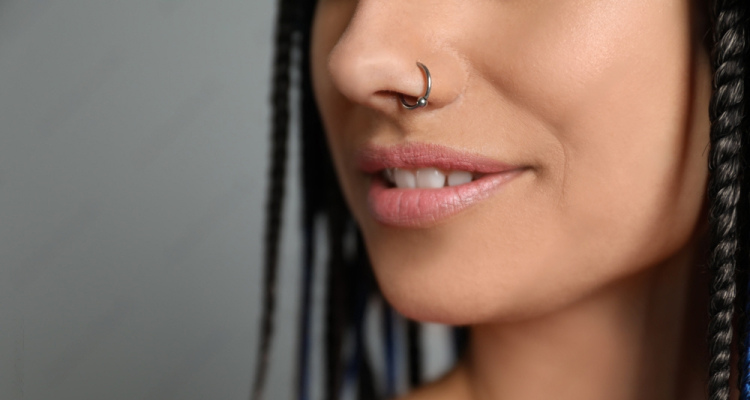
What gauge is a nose piercing?
Posted on
In the diverse realm of body art and adornment, nose piercing has emerged as a timeless and captivating trend that spans cultures and generations. This fascinating practice involves puncturing the nasal cartilage or soft tissue to create an alluring embellishment. From ancient civilizations to modern-day fashion enthusiasts, nose piercings have held a special significance, symbolizing individuality, beauty, and spirituality. What gauge are these exquisite adornments?
Delving into the world of piercing jewelry, this inquiry reveals the various gauges available, each contributing to the charm and personal expression that makes nose piercing an enduring art form.
How do you measure the gauge of a nose ring?
Measuring the gauge of a nose ring is a simple yet critical process to guarantee a comfy fit and suitable healing. The gauge directs to the thickness of the jewelry, and it’s a significant factor in determining the right size for your piercing. You’ll need a needle gauge tool or a digital caliper to measure the gauge accurately. Carefully insert the narrow end of the gauge into the piercing hole until it touches the inside of the nose ring. Read the measurement indicated on the tool, and that’s the gauge of your nose ring.
Nose rings typically come in gauges ranging from 20G (0.8mm) to 16G (1.2mm). Most nose piercings are initially done at 18G (1.0mm) or 20G (0.8mm), but some individuals may prefer thicker jewelry for a bolder look or thinner gauges for a more delicate style. Always confer a skilled piercer to select the suitable gauge for your unique nose piercing to ensure a comfortable and aesthetically pleasing fit.
What diameter is my nose ring?
To determine the diameter of your nose ring, you can use a ruler or a digital caliper. Carefully remove the nose ring from your piercing and lay it flat on a clean surface. For hoops or circular nose rings, measure the distance across the widest part of the ring from the inside edge to the opposite inside edge. This measure will provide you with the diameter of your nose ring.
Common diameters for nose rings range from 8mm to 10mm, but they can vary depending on personal preference and the jewelry style. Always measure your nose ring accurately before making any replacements or modifications to ensure a proper fit and comfortable wear.
How do I make a nose hoop fit snugly?
To make a nose hoop fit snugly, follow these steps
- Choose the right size: Ensure your nose hoop has the correct diameter. Measure your piercing accurately and select a hoop that matches the measurement, allowing a little room for movement but not too loose.
- Bend it gently: If your nose hoop is slightly larger, you can carefully bend it inward. Utilize your fingers to apply mild pressure and gradually shape it to fit your nose better.
- Rubber O-rings: Consider using small rubber O-rings designed for nose hoops. Slide them onto the ends of the hoop to add friction and avoid slipping. O-rings are available at most piercing studios or online retailers.
- Visit a professional piercer: If you’re unsure or uncomfortable adjusting the hoop yourself, seek help from a professional piercer. They can ensure a perfect fit without compromising your piercing’s healing process.
Also Read: Your Guide to Daith Piercing: Everything You Need to Know
Should my nose ring be tight?
Your nose ring should not be too tight. While it’s essential for the nose ring to fit snugly enough to stay in place, it should not cause discomfort or put excessive pressure on your piercing. If the nose ring is too tight, it can irritate the piercing, hinder proper healing, and even lead to complications.
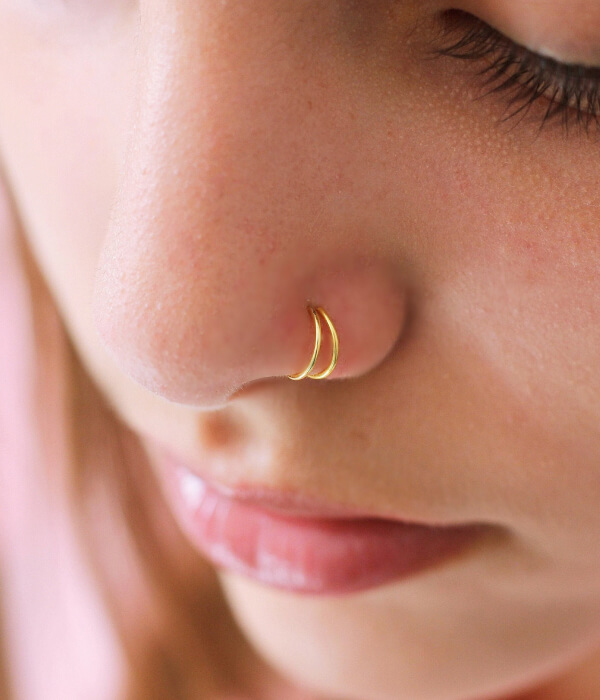
Ideally, the nose ring should allow some room for movement and should not press tightly against the skin. Choosing the right size and gauge for your piercing is essential to ensure a comfy fit. If your nose ring is too tight or causing any discomfort, consider trying a slightly larger size or consulting with a professional piercer who can assist you in finding the perfect fit for your nose piercing.
How do I make my nose hoop smaller?
To make your nose hoop smaller, you can carefully adjust its size using a few methods
- Bending the hoop: If your nose hoop is made of a flexible material like surgical steel or gold, you can gently turn it inward to reduce its diameter. Use your fingers or small pliers to apply gradual pressure until you achieve the desired size. Be cautious not to bend it too much at once to avoid damaging the hoop.
- Trimming the hoop: For certain nose hoops, like seamless rings, you can trim a small section from the open end to make it smaller. However, this method should only be cautiously attempted, and it’s best to consult a professional piercer for guidance.
Always be gentle and patient while making adjustments, and if you are uncertain or uncomfortable, seek assistance from a professional piercer to ensure a safe and proper fit for your nose hoop.
My nose piercing is placed too high to get a hoop. What can I do?
If your nose piercing is placed too high to accommodate a hoop, there are several options you can consider
- Seek proficient guidance: See a reputed piercing studio and consult a professional piercer. They can assess your sharp placement and guide the best jewelry options for your specific anatomy.
- Use a stud or a smaller ring: If a hoop is not suitable due to the placement, consider using a stud or a smaller, more delicate ring that fits comfortably in your piercing without causing any irritation.
- Wait for it to heal: If your piercing is relatively new, it might be best to wait for it to fully cure before attempting to change to a hoop. Healing can affect the placement and allow for better options later.
Remember, each person’s anatomy is unique, and not all piercings suit hoops. Prioritize your comfort and healing process, and consult a professional piercer to find the best solution for your nose piercing.
Is my nose ring too small?
Determining if your nose ring is too small depends on your comfort and the fit of the jewelry. If your nose ring feels tight, causes irritation, or puts pressure on the piercing, it might be too small for your anatomy. An appropriately sized nose ring should allow some room for movement and not pinch or dig into the skin.
It should also sit securely in your piercing without being overly tight. If you’re experiencing discomfort or are unsure about the size, consider trying a slightly larger nose ring or consulting a professional piercer to ensure you have the right fit for your nose piercing. Your comfort and healing are essential to choosing the right nose ring size.
Is my nose ring too big?
If your nose ring feels too big, it can cause discomfort and instability in your piercing. An excessively large nose ring may move around too much, leading to irritation and slower healing. An oversized nose ring might also not sit correctly in your piercing, affecting its overall appearance.
To determine if your nose ring is too big, check if there is significant space between the ring and the piercing hole, causing it to move excessively. If your nose ring doesn’t fit snugly or feels awkward, it might be too big for your nose. Consider trying a slightly smaller size or consulting with a professional piercer to find the appropriate fit that ensures both comfort and aesthetics for your nose piercing.
Standard Nose Ring Sizes
Regarding nose ring sizes, it’s crucial to adhere to the standard gauges of 18G or 20G for studs. Initially, after getting pierced, a lengthier piece of jewelry is used to accommodate swelling.
However, once the swelling subsides, you must visit your piercer for a fitting with a smaller piece. Larger nose rings risk snagging and can move around, potentially hindering healing.
For nose hoops, finding the right size depends on your unique anatomy. To avoid complications during healing, consult a reputable piercer who can recommend the appropriate hoop sizes for your piercing.
Proper sizing is vital in nose piercing care, so avoid forcing jewelry that feels too big or too small. Optimal sizing ensures comfort and aids in the smooth healing of your nose piercing.
Nose Stud Styles
Nose stud styles offer various choices to suit individual preferences and aesthetics. Among the popular options are the classic L-shape, designed with a straight post and a small embellishment on the end. The nose screw features a twisted post that holds the stud securely in place.
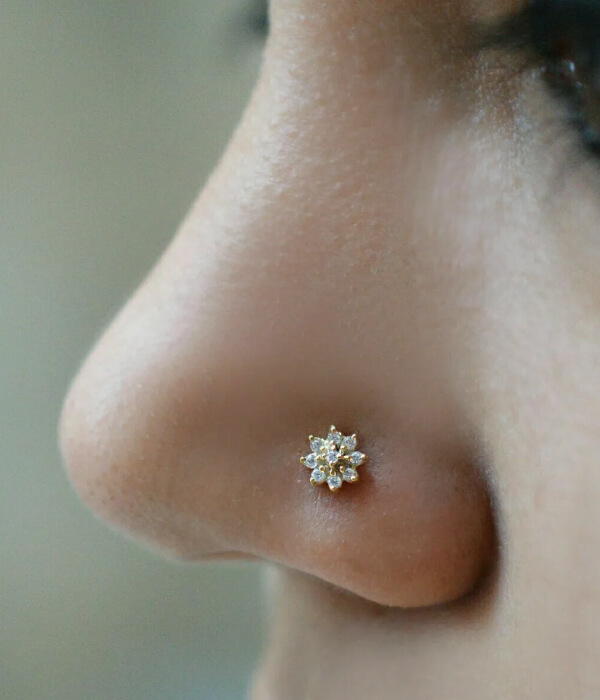
The nose bone has a small ball on one end and a smooth, rounded tip on the other for comfort. Nose pins showcase intricate designs, often featuring a curved wire that adds a touch of elegance. Labret studs, with a flat disc backing, offer stability and come in various decorative tops. These versatile styles ensure everyone can find the perfect nose stud to reflect their unique personality and style.
Nostril Hoop Types
Nostril hoop types present an assortment of stylish options to adorn your nose piercing. The classic seamless hoop provides a continuous circular design, completing an elegant and seamless look. Segment rings have a small removable segment, allowing easier insertion and removal. Clicker hoops feature a hinged mechanism that clicks shut, ensuring a secure fit.
With beads on both ends, circular barbells offer a versatile and edgy alternative to traditional hoops. Captive bead rings feature a bead that fits into the hoop, held in place by tension. These diverse nostril hoop styles cater to various tastes and preferences, providing endless opportunities for personal expression and creativity in your nose piercing.
Why Is Sizing Important?
Sizing is crucial in body piercing, especially when it comes to nose jewelry, due to several important reasons. First and foremost, the right size ensures comfort. Ill-fitting jewelry can induce pain, irritation, and even injury to the piercing site—secondly, the correct sizing aids in the healing process. Too big jewelry can move excessively, directing to slow healing and possible difficulties.
On the other hand, too small jewelry may cause pressure on the piercing and hinder proper airflow during the healing period. Lastly, the right size enhances the overall aesthetics of the piercing, ensuring that the jewelry sits perfectly and looks flattering. Consulting a professional piercer to determine the appropriate size is essential for a successful and comfortable nose piercing experience.
In conclusion, the gauge of nose-piercing jewelry typically falls within the range of 18G to 20G, with 18G slightly thicker. This standard gauge balances comfort, healing, and aesthetics for most individuals. However, variations in nose piercing gauge can occur depending on personal preferences and anatomical considerations.
Choosing the correct gauge is essential to avoid discomfort and complications during healing. When getting a nose piercing, it is best to consult a professional piercer who can help determine the most suitable gauge, ensuring a safe and enjoyable experience in embracing this timeless and captivating form of body art.


